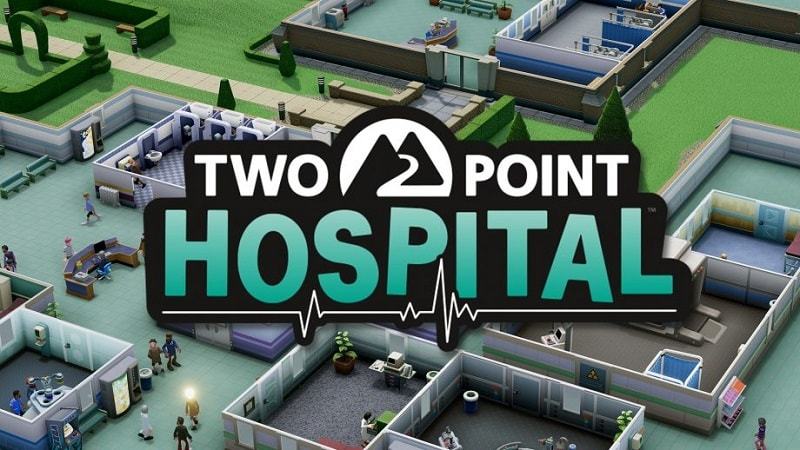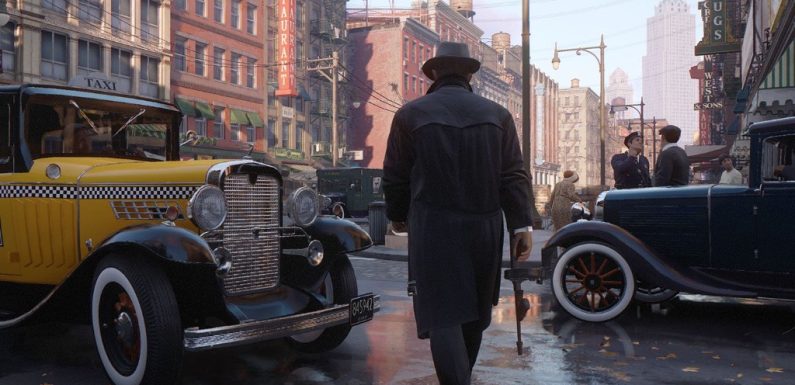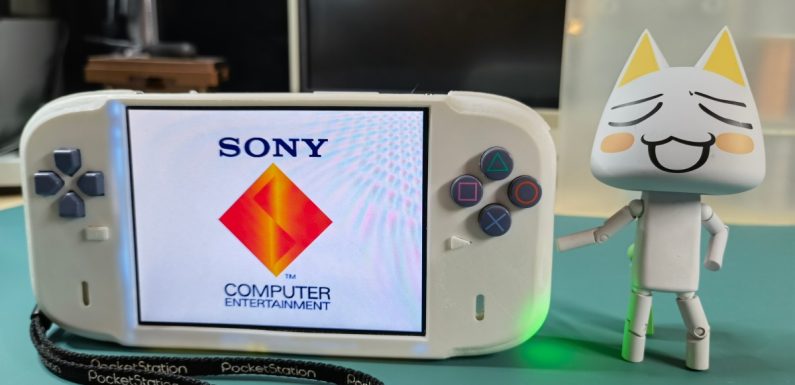
Platforms: PC
Reviewed On: PC
Developer: Two Point Studios
Publisher: SEGA
Singleplayer: Yes
Multiplayer: No
If the phrase, “Patients are reminded not to die in the corridors” sets off your nostalgia senses then congratulations because Two Point Hospital is for, and it’s for me. It’s basically a sequel to the 1998 Theme Hospital in all but name, often feeling so similar that you could swear you were playing a remaster but also putting a few fresh things into the mix to turn this game into one of the most fun and satisfying management sims in recent memory.
Your job is to build up a functioning hospital capable of diagnosing and treating numerous injuries and diseases, all while you manage staff, research new stuff and hopefully turn a tidy profit in the process.
It kicks off identically to the original Theme Hospital as you place an almost disturbingly familiar reception desk in exactly the same place as you would have done all those years ago, and then begin toss down rooms using the simple grid system before decorating them with all manner of stuff in order to make the room more prestigious in the eyes of the staff. There’s a disembodied voice that acts as your guide for the game, but for the first while I never needed to listen to him because my muscle memory just took over. A GPs office goes here, a Pharmacy over there. You build up a basic suite of simple diagnosis rooms before inevitably moving on to more high-tech stuff such as X-Rays, as well as specialised treatment rooms such as surgery or a fracture ward that can help rake in the big bucks.

But if you do happen to be a newcomer seeking to learn the mystical art of not killing dozens of patients via crap staff then Two-Point Hospital does a brilliant job of introducing everything. There are multiple hospitals spanning a country map that you jump between at will, with new locations opening up as you earn stars in previous areas. Interestingly, this also means you can jump back to a successful hospital in order to perform research that you need elsewhere, which is for the best because setting up research rooms can be expensive.
New stuff is introduced at a wonderfully brisk pace. Sure, you can spend extra time at a hospital trying to earn the full 3-stars, and even more stuff will be your reward, but as soon as you get that first star you can shoot off to the next location and the next challenge. It’s just a shame that all the new stuff doesn’t alter the game in any significant way. It’s pretty much all just new rooms that either diagnose or treat and once you’ve built them and giggled at the joke you’ll never pay them much attention ever again.
However, each new location does bring some neat twists to the core concepts, such as one hospital being a teaching hospital and thus every doctor, nurse, assistant and janitor you hire comes with zero experience or skills, so you have to train them up yourself. Other areas focus more on certain types of patient or introduce other things such as earthquakes. Again, like the various rooms and things nothing ever radically shifts the game or moves it away from that Theme Hospital feel, but the changes in goals for each hospital and little tweaks help keep things entertaining.
The point is there’s a nicely balanced learning curve behind it all that pushes you toward using and learning the new systems before then letting you either jump straight to something else or spend some time perfecting your current hospital. In the original Theme Hospital going to a new place meant losing your existing hospital, but here the game retains everything so you can happily work on multiple hospitals at once if you feel like it.

As you get more and more patients stumbling through the front door you’ll inevitably encounter new types of wacky diseases such as Monochromy or Hurty Knee and then have to build new rooms with special equipment to treat them. Is there an incoming clown epidemic? Well, you need a Dehumourifier room. Somebody has a light bulb for a head? You need a special room that will unscrew the bulb then ram a brand new head onto the patient! Is there a severe outbreak of Turtle Head? A suction machine capable of sucking their heads back into place is whats needed! Man, modern medicine is so amazing.
The dry sense of humour is fantastic throughout with quirky animations for both the doctors and the patients. You might find a doctor just chilling out in his diagnosis room playing with a magic wand and zooming in to watch someone undergoing surgery getting a rubber duck pulled out of them never gets old. You also get a hospital announcer who sounds almost identical to the original Theme Hospital lady, and she’ll merrily make a bunch of funny comments. Finally, the relaxing music is interspersed with some genuinely funny radio hosts whose commentary will eventually become a pleasant background blur.
Staff management becomes a big part of proceedings because you can send your employees in for training, giving them better bonuses or letting them learn the skills needed for specific jobs such as surgery or psychiatry. The catch, of course, is that sending someone for some good ‘ol learning can leave you understaffed and struggling, especially if you decide to use another member of your staff as the teacher to save some cash. I really enjoyed this aspect of the game and how I could often choose between simply hiring expensive staff with powerful bonuses or could progressively train cheaper employees over time.

You need to keep your staff happy, too, by paying them well, giving them a good staff room, training them up and just ensuring their rooms are HUGE! Aggravated staff will deliver ultimatums and then walk out if you don’t manage to meet their demands in time.
Everything you need to know to keep track of it all is neatly presented in menus or by clicking on staff or patients, while a simple notification system keeps you updated on staff problems, a disease that requires a room you don’t have yet or upcoming VIP visits. For those who like to keep track of everything I feel like there’s enough information here to keep you happy, but I also loved how the game never feels like it forces you to dig into the stats in order to do well.
A second currency called Kadosh can be earned by completing staff challenges, online challenges against other players and by hitting career milestones, and with this currency you can unlock new items to pop down around your hospitals to increase patient happiness and more.
You can also launch special marketing campaigns to bring in more paying customers or advertise the fact that you’re really good at dealing with a specific problem, while research rooms let you unlock upgrades for various machines and other handy stuff.
Arguably the biggest flaw Two Point Hospital actually has is that it never leaves the safety of its Theme Hospital adoration. For the first hour or two of play it would be easy to believe that Two Point Hospital is a glorified remaster of Theme Hospital sporting updated graphics and little else, and even once it starts introducing new elements it can sometimes feel like you aren’t playing a game that was launched some 20-years after its inspiration entered the world.

Actually, no, I take that back. There’s a bigger problem here that needs to be talked about, and that is the utterly insane amount of GP offices you need to have. These rooms form the foundation of your entire hospital, the very first place each patient visits and then will return too during the diagnosis process. As each mission goes on, though, and the influx of patients becomes more like a raging torrent of complaining humans the queues outside of GP offices will become massive, forcing you to build more and more of them. You can combat this by smartly building your hospital early on and investing in good staff training so less diagnosis time is needed, but even then huge lines will form. A lot of the issue stems from the way quoeues are handled as any patient who ambles off to go to the bathroom or to grab food or even play on an arcade machine will retain their place in the line. This wouldn’t be so bad if it wasn’t for the fact that patients will often ignore the snack machines and magazine racks beside them in order to wander off to the other side of the hospital, even if they are next in line.
In fact, there are some A.I. issues throughout with patients sometimes getting stuck in a room or how the game won’t automatically pick the best staff for a job. However, neither of these are big problems and you can actually set staff so that they can only work in certain rooms.
I also noted a little bit of frame rate issues when I was placing items in rooms in larger hospitals. With that said the performance is otherwise absolutely fine and the cartoon graphics look lovely.
Two Point Hospital is massively successful in its execution. It takes the original Theme Hospital, spruces it up with new visuals, tosses in some new stuff and then injects it straight into the nostalgia center of your brain. It’s a testament to the original Theme Hospital that its core gameplay still holds up so damn well to this day. Playing Two Point Hospital is honestly a pleasure, and whether you’re someone who played Theme Hospital back in the day or someone who never did you’re going to love this reincarnation of a classic. You start building a hospital and before you know it hours have passed.













